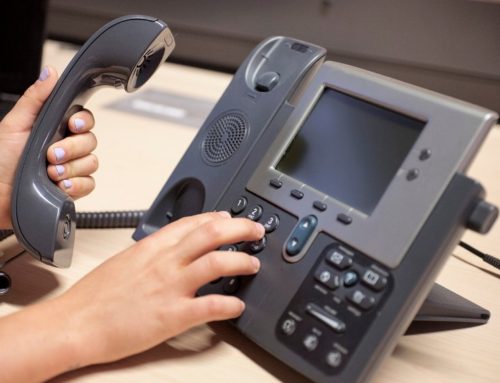‘Designing Strategies’ Newsletter
March – April 2013 Volume 10 — Issue 52
For those paying attention, you probably noticed over the past several years, an increase in  news of disasters. We have been inundated by news and weather reports of a growing number of natural disasters. You name the type – hurricanes, earthquakes, wild fires, tsunamis, typhoons, floods, mud slides, blizzards or drought. Regardless of your personal beliefs regarding global warming, climate change or natural cycles here on Earth, news coverage indicates that natural disasters have increased 400% over the past three decades. All of these catastrophic news reports makes a small business owner begin to see the value of a business continuity plan.
news of disasters. We have been inundated by news and weather reports of a growing number of natural disasters. You name the type – hurricanes, earthquakes, wild fires, tsunamis, typhoons, floods, mud slides, blizzards or drought. Regardless of your personal beliefs regarding global warming, climate change or natural cycles here on Earth, news coverage indicates that natural disasters have increased 400% over the past three decades. All of these catastrophic news reports makes a small business owner begin to see the value of a business continuity plan.
Thousands of people have been injured, died or just disappeared. Roads were blocked or completely washed out. Millions found themselves homeless as cities and villages were destroyed as a result of these horrific catastrophic events. Businesses of any size were not exempted from these disasters. Buildings were flooded or washed away, roofs collapsed and wind damages were extreme. Equipment and inventory was severely damaged or totally destroyed. Only those businesses who prepared ahead of time were able to get back on their feet and resume operations quickly. In hindsight, the value of a business continuity plan are evident. If you don’t have one, it’s time to develop yours. VISUALIZE
Will your organization be ready if a natural disaster occurs in your area tomorrow? How quickly could you get back up and running? Do you have a business continuity plan, sometimes called a crisis management plan, in place? How likely is it that you could pick yourselves up, brush yourselves off and start moving forward again in a short period of time? Without a business continuity plan in place, many small businesses find themselves in a situation from which they can never recover.
Just having a business continuity plan isn’t nearly enough. You don’t want it to be like other major, important documents that tend to just sit on a shelf and collect dust. It is critical that your staff is informed about the continuity plan and ready to implement it when the need arises.
 What plan to you have for quickly contacting key personnel? Would each know what they need to do? Is there an alternative location and facility lined up that you could use? Or, could your business function with staff telecommuting for a while? What about your records; are they backed up in a secure, yet easily accessible, location? How about your computers, software and other equipment? Can materials and inventory be stored safely ahead of time. If not, it is imperative that you be able to access vendors for quick replacement. How will you communicate if phones and Internet are unavailable? Power may be knocked out for an extended period of time. You’ll need plans for supplying alternative power sources like backup batteries or generators.
What plan to you have for quickly contacting key personnel? Would each know what they need to do? Is there an alternative location and facility lined up that you could use? Or, could your business function with staff telecommuting for a while? What about your records; are they backed up in a secure, yet easily accessible, location? How about your computers, software and other equipment? Can materials and inventory be stored safely ahead of time. If not, it is imperative that you be able to access vendors for quick replacement. How will you communicate if phones and Internet are unavailable? Power may be knocked out for an extended period of time. You’ll need plans for supplying alternative power sources like backup batteries or generators.
There is something quite unsettling about being the victim of such a situation. Too many businesses have faced these same questions in recent years. No matter how quickly local, state and federal government steps in with aid, it can take months and often years to put areas stricken by natural disasters back together again.
There are myriad things to think about and plan for if your firm is to survive. The good news is, it need not be an impossible situation if you take the time when life is good to plan for disasters. Planning in advance allows you to calmly think through what you will need to carry on. In the midst of chaos, it is more difficult to think clearly and strategically. Take time to develop a business continuity plan before you need it. Having that plan in place can make what seems impossible become possible. ANALYZE
Get started now, before crisis strikes in your area. Create the business continuity plan and documentation you will need to carry on your business. Make copies of your continuity plan – electronic and printed copies. Make sure all of your key staff have copies – in a dry, secure location. Be sure each employee understand their areas of responsibility. Include contact information for each of them as well as your suppliers and professional advisers like your insurance agent, attorney and accountant.
Each key staffer needs to have contact information for his/her staff, and instructions for his/her area of responsibility. Be aware of what equipment you depend on to run your business. Computers, software, printers, plotters, fax machines, phones and manufacturing equipment all fall into this category. What do you depend on and how will you save or replace it quickly?
Business continuity planning is a form of scenario planning. It involves taking time to ask a lot of “What if…?” questions, then addressing all the possibilities of what might happen and how it would affect the various aspects of your business. Being prepared can take a great deal of the trauma out of a catastrophic situation.
Create your strategic business continuity plan, copy it, print it, pass it around. Be sure that everyone knows what will be expected of them to get their part of the business back up and running. As the saying goes, ‘practice makes perfect’. Take a day to practice the strategies you have developed to see how everything works, or what you may have forgotten. While it might seem like a lot of work, this planning can make the difference between your business surviving and its demise. With any luck, you will never have to use it. STRATEGIZE
VISUALIZE – ANALYZE – STRATEGIZE
Your Way to Success
Maurer on the Move…
Terri Maurer will be in Tucson, Arizona on Thursday, April 17th presenting ‘Designing for the Generations’ a .2 credit IDCEC-accredited continuing education program at the ASID Arizona South ‘Arizona Designs ’13’ education and trade exposition. The event will be held at the DoubleTree at Reid Park from 8am to 4pm.
For more information and registration, connect to: http://www.asidtucson.org
Designing Strategies: The Blog
Don’t forget to stop by to catch up on the latest posts on valuable business information for small business owners. Better yet, subscribe to the RSS feed to bring cutting edge business topics right to your desktop as soon as posts go up. Link here to subscribe: https://www.maurerconsultinggroup.com/blog






